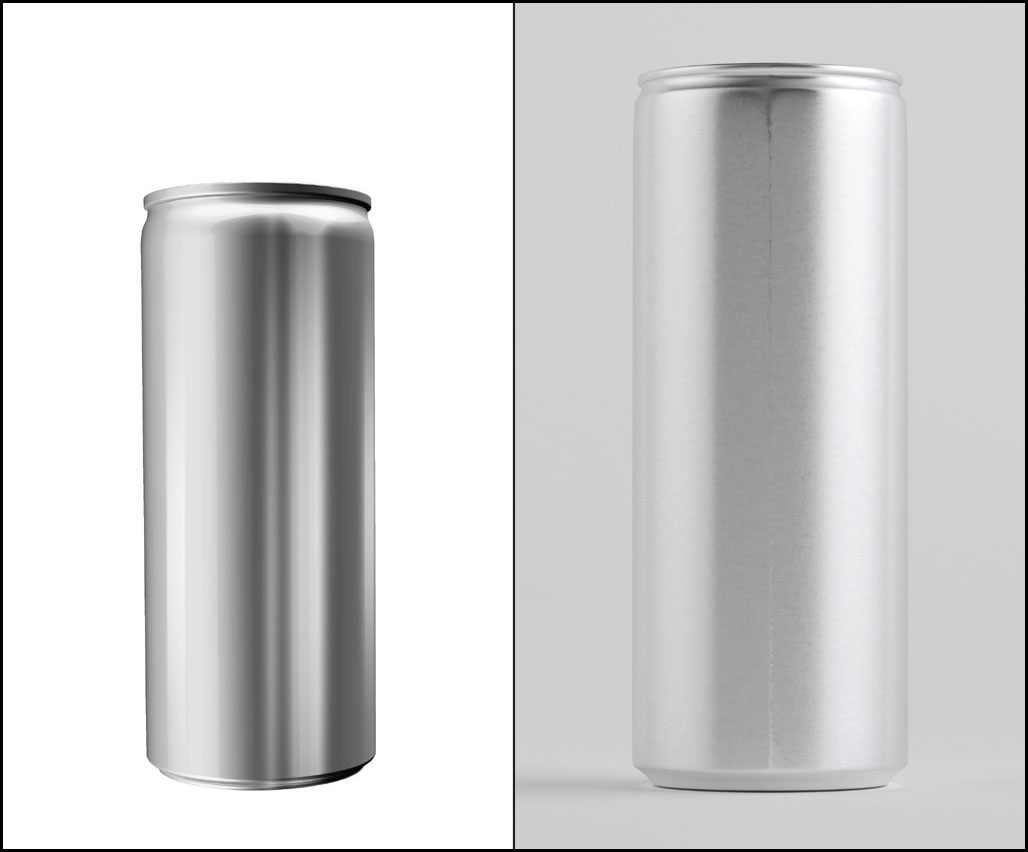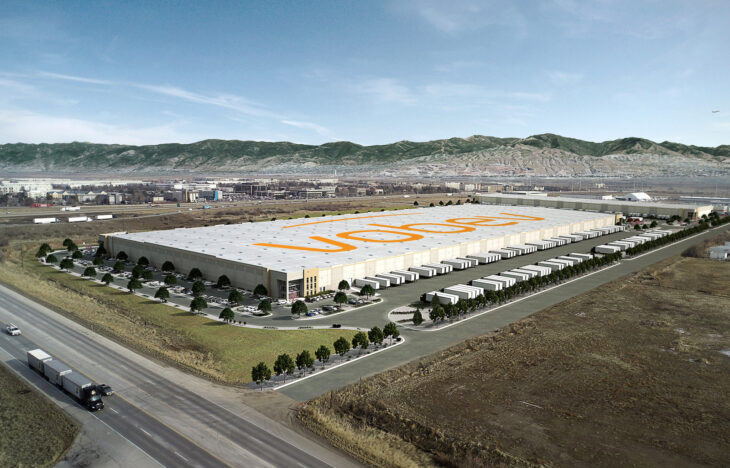By Andrea Svendsen, Managing Editor.
Vobev is an innovative startup company that aims to shake up the beverage industry. The company is currently completing its massive manufacturing campus in Salt Lake City, UT, which will start up operation by the end of 2021. The facility includes both aluminum beverage can production and can filling—making it the first independent company in North America to streamline the beverage supply chain under one roof. By bringing these production processes together, the company will reduce the environmental impact of the beverage production process, as well as provide an improved supply chain that is five times faster than a traditional can manufacturer or filler, shortening lead times by ten weeks.

“Opening an integrated, independent canned beverage manufacturing and development facility that can be the quickest-to-market is an incredible team accomplishment,” said Eric Cudnohoske (Figure 1), general manager of Vobev. “We have taken bold steps to combine the idea-to-shelf process in a facility that is environmentally friendly and technologically savvy. This facility will have the people and space needed to essentially change the industry.”
A New Beverage Making Model
The concept for Vobev started back in 2019, when the founding partners came together to ask a fundamental question—what is an industry in which they could do business better? After doing internal research on several manufacturing sectors, the partners zeroed in on the beverage industry as providing a significant business opportunity. Though other packaging options were considered, the company quickly shifted its focus to the aluminum can due to a number of factors.
Among these factors were the logistical challenges in where and how beverage cans are manufactured and distributed across North America. “In today’s world, a can could be made on the East Coast, shipped to the West Coast to be filled, and then shipped back to the Midwest for repackaging before being sent to a distribution center, which sends the final product out to supermarkets or wherever it needs to go,” explained Cudnohoske. “Looking at this we thought about whether we could bring all these manufacturing processes together into one location to make them more efficient.”
Vobev believed it could develop a better business model by bringing the aluminum can making and filling processes under one roof, enabling them to ship and distribute the final product from a single location. On the business side, this would make the process of producing canned beverages more efficient and cost effective. In addition, it would improve the sustainability of the business by reducing the amount of trucks on the road, shipping the cans and beverages back and forth.
Another factor behind the choice of the aluminum can is that it is infinitely recyclable, bringing it in line with Vobev’s sustainability goals. “Aluminum cans are the most recycled product in the U.S. and around the world, which is something I didn’t realize until we started to research the market and talk to industry experts,” said Cudnohoske. “This is what sets aluminum apart from plastic or other beverage container materials and makes it a sustainable choice.”
With this business model in mind, Vobev decided to focus on serving small to mid-sized beverage manufacturers, which were largely underserved in the market. “These smaller beverage manufacturers had great ideas, but were having a hard time finding places to purchase cans or fill them,” noted Cudnohoske. “If we could find a means of filling that demand, then we knew it would be a great business proposition.”
While Vobev was in its planning phase, the company began to hear rumblings about a possible shortage of aluminum cans in the future. The predictions didn’t seem impending, but it indicated that there would be an ongoing demand for aluminum beverage cans in the years ahead.
Of course, no one expected the can shortage to come as soon as it did. When the COVID-19 pandemic became a major concern, causing numerous lockdowns across the U.S. and around the world, this affected the can industry in two ways. First, it created an increased demand for canned beverages, as individuals found themselves at home for extended periods of time and began to stock up on canned drinks. Second, the pandemic caused supply chain issues that directly contributed to a shortage of aluminum cans, resulting in what Cudnohoske likes to refer to as the candemic.
In late 2020 and on into 2021, the candemic has continued to have an impact on the can and beverage manufacturing industries. As large beverage producers were finding themselves struggling to gain access to cans. Many can manufacturers are investing in new aluminum can capacity around the world in order to address the can shortage issue (see article on page 10), as well as to meet expected growth in demand over the coming years, as the beverage industry shifts toward more sustainable packaging. However, Vobev is unique in the U.S. with its integrated production model.
An All-in-One Plant
With a business model and plan in place, Vobev began moving forward with site selection in 2020. The company began looking into the locations of can making plants in the U.S. and where their customers were. Their research led them toward focusing on serving the West Coast. Ultimately, they selected Salt Lake City as the location of their new plant, because of the excellent available workforce and the logistics, which provided nearby railroads, highways, and airports. In particular, the company would like to focus on rail for sourcing aluminum sheet and other raw materials, due to the environmental benefits over trucking.
At the same time that Vobev began searching for a location, they were also doing their homework on the manufacturing processes that they would be implementing. Despite the beverage industry’s tendency to be secretive, the company was able to find some can manufacturing and can filling operations that would let them in to observe and learn from the process. “It’s always interesting when you get to talk to different people in the industry,” said Cudnohoske. “Everyone has their own great ideas of what the best methods are for running things. You have to keep an open mind and then decide how to apply all that information.”
Although the COVID-19 pandemic created some supply chain issues during the construction phase, assembling the Vobev facility and its operations has remained on track. The 1.2 million sq ft facility is designed with state-of-the-art technologies, capable of providing efficient production and filling of aluminum cans. The site is essentially a one-stop shop for beverage brands, providing everything from recipe creation and packaging design to making, filling, packaging, storing, and shipping beverages. In addition, the manufacturing facility plans to utilize technologies like water reclamation, solar power, and warehouse automation to further improve its environmental footprint.

Vobev will be able to produce, fill, print, or sleeve aluminum cans in a variety of sizes, including 250 ml (8.4 oz) and 355 ml (12 oz) cans (Figure 2). The variety of packaging options will be designed for an array of beverages, including waters, carbonated soft drinks, energy drinks, wine, spirits, seltzers, and more. Customers will have the option to combine products into different package sizes from four packs up to 24 count trays with single or multiple drink varieties.
“We took our idea and we built it up from a piece of concrete,” explained Cudnohoske. “We were very intentional about how we laid out the campus. We had to be careful about where to put the can line, filling lines, warehouse, and logistics center—and how to make it all flow. Vobev is a purpose built facility.”
Aluminum Can Production
The Vobev facility will include both aluminum can body and eventually can end production. Can manufacturing is a high-speed, multi-step process, which is performed in slightly different ways, depending on the manufacturer. From a general perspective the process begins with a pre-forming process, called cupping, in which round disks are punched out of raw aluminum sheet and then formed into cups.
These cups are then carried through several stages of forming, which shape the cylinder of the can (with the dome on the bottom) according to the desired size and style (standard, sleek, or slim). During the stretching and shaping of the can body, heat is generated, which means that it has to be cooled at various stages.
Once the shape of the can body has been achieved, it needs to be washed to remove any lubricants or other contaminants. It also goes through a mild DII acid bath, which lightly etches the aluminum surface to make it more receptive to decoration. Following etching, the can continues to be washed and then dried prior to being sent through the decorator, which applies the beverage brand label. The can then goes through an oven, which bakes the ink so that it won’t smudge.
At this stage, the aluminum can receives a final surface treatment, which coats the inside of the can and seals off the aluminum, so it doesn’t come in contact with the beverage. After a curing stage to set the sealant, the final shaping process, called necking, is performed. This process prepares the top of the can, so that it will be able to receive the end correctly in the filling process. The can is then palletized, which ensures that the cans remain clean while they are stored or delivered to the filling area.
Within its aluminum can body operation, Vobev has implemented advanced automated technologies to ensure precise, high speed production. In addition, the company has implemented a scrap collection system to handle any process scrap generated during production. The collected scrap is transported through a vacuum system that delivers it to the bailing area. The scrap is bailed and then shipped back to the aluminum suppliers in a completely closed-loop system.
The safety of its employees throughout its facility is also a major concern for Vobev. Therefore, this new aluminum can line is designed with built-in safety systems, such as guard rails to prevent personnel from coming into contact with moving machinery. In addition, the company has an onsite environmental, health, and safety (EHS) expert, as well as a training and development experts, who provide ongoing training. This stems from its company culture, which is based on what they call the Vobev triangle—safety, quality, and people.
“We take the Vobev triangle very seriously,” said Cudnohoske. “We want our people to understand how to do their job safely, efficiently, and most importantly, to be able to go home feeling good about their work. If that doesn’t happen, then we as leaders at Vobev have failed.”
Can Filling
Once the cans have been produced and palletized, the facility has a number of sophisticated automation systems to deliver the cans to the filling area. The company will both receive pre-made beverages from customers and be able to produce beverages according to customer specifications. An R&D center at the facility will allow the company to develop and test new drink recipes onsite in order to support customers in expanding their product range. Initially, the company intends to fill and ship water, sparkling water, carbonated soft drinks, and energy drinks, but plans to begin producing wines, spirits, and hard seltzers within the next year.
Conclusion
Vobev is currently putting the final touches on its integrated beverage can manufacturing facility and is narrowing in on the start of production by the end of this year. “I’m proud of our team,” said Cudnohoske. “Everywhere we turned throughout this journey, there were new hurdles, but we found ways to overcome them.”
Once launched, the company hopes that its new facility will become the development epicenter for the can making and filling industry in North America. “We really want Salt Lake City to be the beverage hot bed of the U.S.,” he added. “We believe that we have the facilities and the knowledge to make that happen. In the weeks since we announced Vobev and our plans, we’ve been astonished at the level of positive feedback and interest we’ve received from every level of the beverage industry. Already, it has been better than we expected. But first, we have to make a can, fill a can, and ship a can—and we’re very close to achieving that.”
Editor’s Note: This article first appeared in the December 2021 issue of Light Metal Age. To receive the current issue, please subscribe.

